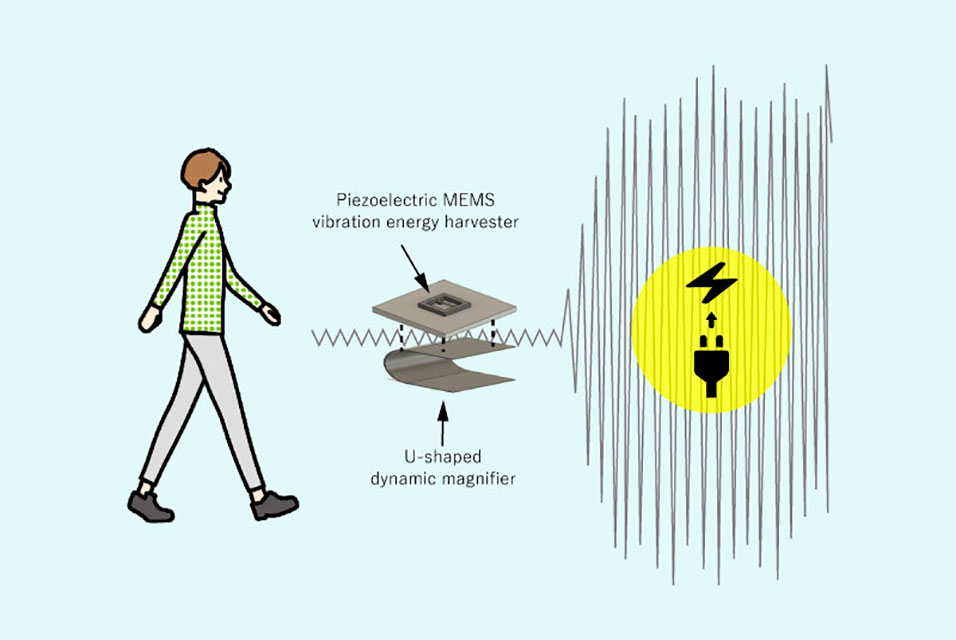OSAKA.- Walking can boost not only your own energy but also, potentially, the energy of your wearable electronic devices.
Osaka Metropolitan University scientists made a significant advance toward self-charging wearable devices with their invention of a dynamic magnifier-enhanced piezoelectric vibration energy harvester that can amplify power generated from impulsive vibrations, such as from a human walking, by about 90 times, while remaining as small as currently developed energy harvesters. The results were published in Applied Physics Letters.
These days, people carry multiple electronic devices such as smartphones, and wearable devices are expected to become increasingly widespread in the near future. The resulting demand for more efficient recharging of these devices has increased the attention paid to energy harvesting, a technology that converts energy such as heat and light into electricity that can power small devices. One form of energy harvesting called vibration energy harvesting is deemed highly practical given that it can transform the kinetic energy from vibration into electricity and is not affected by weather or climate.
A research team led by Associate Professor Takeshi Yoshimura from the Graduate School of Engineering at Osaka Metropolitan University has developed a microelectromechanical system (MEMS) piezoelectric vibration energy harvester that is only approximately 2 cm in diameter with a U-shaped metal component called a dynamic magnifier. Compared with conventional harvesters, the new harvester allows for an increase of about 90 times in the power converted from impulsive vibrations, which can be generated by the human walking motion.
The team has been working on developing vibration energy harvesters that utilize the piezoelectric effect, a phenomenon in which specific types of materials produce an electric charge or voltage in response to applied pressure. So far, they have succeeded in generating microwatt-level electricity from mechanical vibrations with a constant frequency, such as those generated by motors and washing machines. However, the power generation of these harvesters drops drastically when the applied vibrations are nonstationary and impulsive, such as those generated by human walking.
Responding to this challenge, the team developed and incorporated the U-shaped vibration amplification component under the harvester. The component allowed for improvement in power generation without increasing the device size. The technology is expected to generate electric power from non-steady vibrations, including walking motion, in order to power small wearable devices such as smartphones and wireless earphones.
Professor Yoshimura concluded, "Since electronic devices are expected to become more energy-efficient, we hope that this invention will contribute to the realization of self-charging wearable devices."









